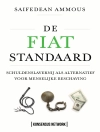As the ‘world’s factory’ China exerts an enormous pressure on workers around the world. Many nations have had to adjust to a new global political and economic reality, and so has China. Its workers and its official trade union federation have had to contend with rapid changes in industrial relations. Anita Chan argues that Chinese labor is too often viewed from a prism of exceptionalism and too rarely examined comparatively, even though valuable insights can be derived by analyzing China’s workforce and labor relations side by side with the systems of other nations.The contributors to Chinese Workers in Comparative Perspective compare labor issues in China with those in the United States, Australia, Japan, India, Pakistan, Germany, Russia, Vietnam, and Taiwan. They also draw contrasts among different types of workplaces within China. The chapters address labor regimes and standards, describe efforts to reshape industrial relations to improve the circumstances of workers, and compare historical and structural developments in China and other industrial relations systems. Contributors: Frederick Scott Bentley, Rutgers, The State University of New Jersey; Florian Butollo, Friedrich-Schiller University, Germany; Anita Chan, University of Technology, Sydney, and Australian National University; Chris King-chi Chan, City University of Hong Kong; Yu-bin Chiu, National Pingtung University of Education, Taiwan; Sean Cooney, University of Melbourne; Mary Huong Thi Evans, Rutgers, The State University of New Jersey; Navjote Khara, Niagara College; Kevin Lin, University of Technology, Sydney; Mingwei Liu, Rutgers, The State University of New Jersey; Peter Lund-Thomsen, Copenhagen Business School and Nottingham Business School; Boy Lüthje, Institute of Social Research, Frankfurt, Germany and Sun Yat-Sen University, China, and the East-West Center, Honolulu; Khalid Nadvi, University of Manchester; Thomas Nice, Australian Indigenous Mentoring Experience; Tim Pringle, SOAS, University of London; Katie Quan, University of California–Berkeley and Sun Yat-Sen University, China; Susan J. Schurman, Rutgers, The State University of New Jersey; Kaxton Siu, Chinese University of Hong Kong; Hong Xue, East China Normal University, Shanghai
قائمة المحتويات
Introduction: The Fallacy of Chinese Exceptionalism
by Anita Chan Part I. Historical and Structural Developments 1. Exporting Corporatism? German and Japanese Transnationals’ Regimes of Production in China
by Boy Lüthje2. Globalization and Labor in China and the United States: Convergence and Divergence
by Mingwei Liu, Frederick Scott Bentley, Mary Huong Thi Evans, and Susan J. Schurman Part II. Labor Standards 3. Recomposing Chinese Migrant and State-Sector Workers
by Kevin Lin4. Industrial Upgrading and Work: The Impact of Industrial Transformation on Labor in Guangdong’s Garment and IT Industries
by Florian Butollo5. The Working and Living Conditions of Garment Workers in China and Vietnam: A Comparative Study
by Kaxton Siu6. Race to the Bottom: The Soccer Ball Industry in China, Pakistan, and India
by Anita Chan, Hong Xue, Peter Lund-Thomsen, Khalid Nadvi, and Navjote Khara Part III. Trade Unions, Collective Bargaining, and the Right to Strike 7. Labor NGOs under State Corporatism: Comparing China since the 1990s with Taiwan in the 1980s
by Chris King-chi Chan and Yu-bin Chiu8. One Step Forward: Collective Bargaining Experiments in Vietnam and China
by Katie Quan9. Creating a Right to Strike in China: Some Lessons from the Australian Experience
by Thomas Nice and Sean Cooney10. Trade Union Reform in Russia and China: Harmony, Partnership, and Power from Below
by Tim PringleNotes
Contributors
Index
عن المؤلف
Anita Chan is a Research Professor at the Australia-China Relations Institute of the University of Technology, Sydney, and a visiting fellow at the Australian National University. She is the editor of Walmart in China, also from Cornell, the author of China’s Workers under Assault: The Exploitation of Labor in a Globalizing Economy, and has published seven other books.










